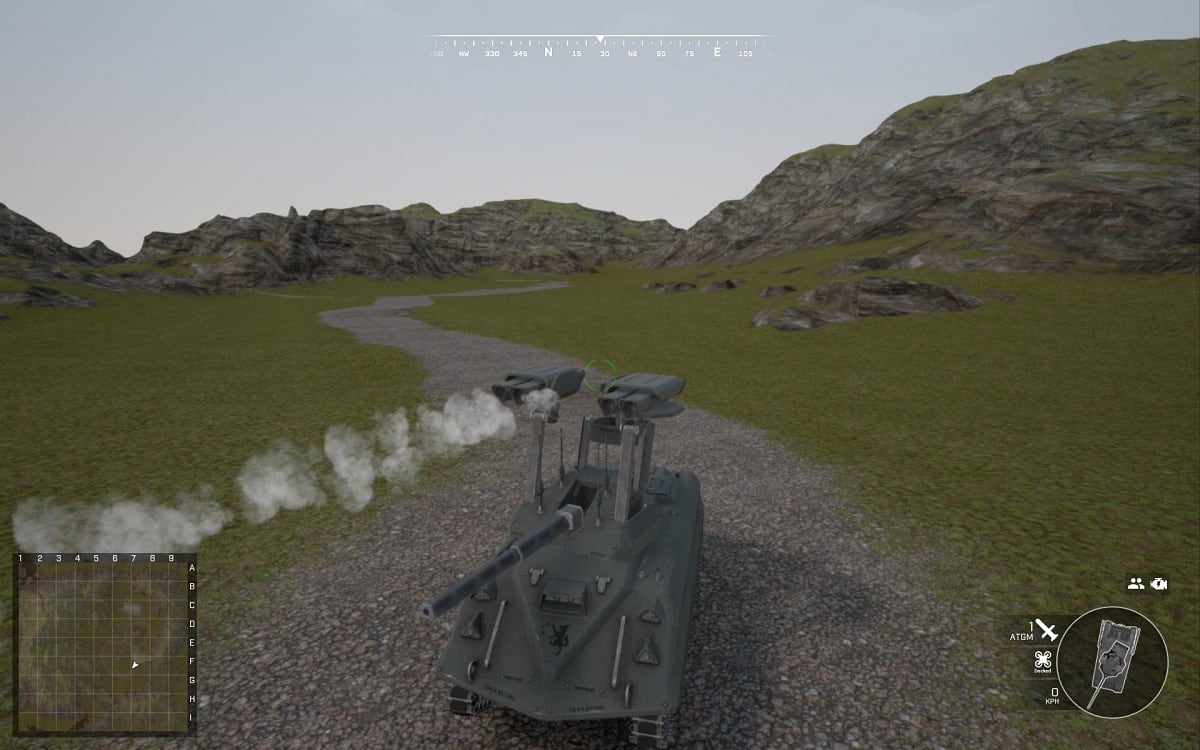If a tank or unmanned aerial vehicle doesn’t work out during field testing, it costs the Army a lot of time and money to go back and make changes to the design or function.
But with a new online game from the Training and Doctrine Command, soldiers can test it out in a virtual environment and offer feedback before the equipment is built.
Operation Overmatch, streamed through online gaming platform Steam, allows soldiers to complete missions with concepts the Army is thinking about implementing.
Operation Overmatch will enter its beta test phase on Oct. 10, and soldiers will focus on providing feedback on the game itself as it’s being developed and refined, said Lt. Col. Brian Vogt, the project lead on early synthetic prototyping, which leverages synthetic environments to foster design and testing.
“Ultimately, as this gets developed, it will enable soldiers to have an impact on the future force,” Vogt told Army Times.
Soldiers can visit operationovermatch.com, register with their name and email and choose between single-player or multiplayer mode. In multiplayer, soldiers are split into two groups: attacker and defender. They can use the available equipment to complete certain mission objectives.

So far, the game uses early concepts for armored vehicles, as well as UAVs, unmanned ground vehicles and robotics, he said.
For example, players can drive vehicles, fire at targets and perform reconnaissance with UAVs.
“They are very early ideas,” Vogt said. “Not named capabilities or programs yet.”
He said the Army knows robotics has the potential of having a dramatic impact on the future battlefield, and it wants to start exploring those concepts in the game environment.
More than 1,000 soldiers have tested the game so far, and TRADOC is looking for more to provide feedback on both the game and its capabilities.
On the game development side, TRADOC wants to know how to make gameplay more user-friendly and engaging.
For the concepts and capabilities in the game, TRADOC wants players to look at three areas:
- Employment: What do you use certain capabilities for and how do you use it.
- Force organization: A player might recommend, for example, that there should be a certain number of vehicles in a platoon.
- Capabilities: Soldiers can say how a capability should be tweaked. For example, if the quadcopter should fly higher or faster.
There are two ways to leave feedback:
- Explicit: Soldiers can post on a discussion board about what they liked or didn’t like.
- Game analytics: Eventually, TRADOC will do data analysis on everything that took place in the game environment. For example, what types of weapons tended to be more successful, etc.
“This is an opportunity for [soldiers] to engage in shaping the future of their Army,” Vogt said. “Getting user feedback early on is really important.”

First Sgt. James MacKay, with B Company, 53rd Signal Battalion (Satellite Control), 1st Space Command, said he served in a recon and support role during his team’s multiplayer mission.
“I was able to use a deployable UAV to scout the area to feed enemy positions and movements to my team to put us at an advantage,” said MacKay, who’s stationed at Fort Meade in Maryland.
He said using this was unique to the game environment because the vehicle had an integrated UAV component.
“It’s not common for a vehicle to have a drone and pilot there,” he said.
Testing this capability in a synthetic environment gives insight into whether it’s worth investing in, MacKay said.
“Instead of having to go and build an entire vehicle and test it, field it and train on it then find out there’s something we wish we could have done, we can use this [game] to see if it’s worthwhile or not,” he said.
If it’s decided that something should be tweaked, it can be done quickly and without spending unnecessary money.
“With early synthetic prototyping, we can take end-phase feedback and bring it back to the front of the design phase,” MacKay said. “You can reclaim all that time, energy and money.”
“You’re able to fail faster and learn faster,” said 2nd Lt. Daniel White, with Delta Company, 1st Battalion, 145th Aviation Regiment at Fort Rucker in Alabama.
White said the game gives soldiers the opportunity to design new vehicles and test them in a situation where it’s okay if something goes wrong.
MacKay agreed, saying players can also take tried and true weapons and combine them with new concepts to see how they work together or if they’re a mismatch.
“You don’t have to learn lessons on the battlefield in blood,” he said. “You don’t risk loss of equipment or life.”
White said younger soldiers might not always feel like they have much of an input when it comes to the future of the Army, but Operation Overmatch will give them an outlet for their ideas.
“One of the really good things about this being in a video game that will be available to younger soldiers is you’ll be reaching a much wider audience,” he said.
Charlsy is a Reporter and Engagement Manager for Military Times. Email her at cpanzino@militarytimes.com.




